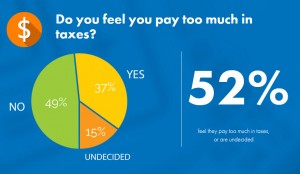After much deliberation, you’ve finally landed on the perfect domain name for your business. The next step is to actually acquire the name so you can launch.
But wait! Before jumping into a purchase, there are some things you should know about how all of this works to make an informed decision:
- Where to buy the name
- The major domain industry players
- What it will cost (both initial and recurring)
- What to do if the name is already registered
- What happens after you acquire the name
Where to Buy a Domain Name?
There are three places where you can purchase domain names:
- ICANN Registrars – These are companies that are accredited by ICANN to manage the registrations of domain names. Big names include Hover.com and NetworkSolutions.com. Click here for a comprehensive list of ICANN-accredited registrars.
- Web Hosts – These are companies that provide hosting services in addition to domain registration services; one-stop shops if you will. Big names include BlueHost.com and HostGator.com.
- Domain Marketplaces – Think eBay. These are places where domains can be bought, sold, and auctioned to the highest bidder. Big names include NameJet.com and Sedo.
Although these companies fit into different categories, you’ll find that there is some overlap between services. For example, GoDaddy provides hosting services in addition to being a registrar.
This is why it pays to do your research and shop around before deciding on one. Depending on your needs, you may find that a “one-stop-shop” would be better for you than a more specialized company. Typically, the more specialized a place, the better service they offer for that one thing. The companies that do it all provide decent services across many areas.
Costs of Owning a Domain Name
When you search your name into a registrar or marketplace, you’ll find that registration fees can vary based on the extension and the name itself. Typically, dot-coms that are short and easy to say and spell (premium domains) are the most expensive. However, across all domains, registration fees are typically $ 5-$ 100 per year range.
What if the Name is Already Registered?
You may find when searching your name that it is unavailable to register. Don’t panic! This just means that someone else has already registered the name. This doesn’t mean you can’t acquire the name. It just means you’ll have to purchase the name from the current owner (if they’re even willing to sell). Of course, depending on how much the name is worth to that person, you’ll have to pay much more than the price of simply paying the registration fee.
If the asking price is simply too high, there are some alternative strategies that you can use to still get a great domain:
- Use a different extension. If the dot-com is taken, there are a handful of decent alternative extensions that you can use. Many companies are looking at different extensions, such as .shop or .us. You can even get creative and make your name and extension go together like Be.Vip.
- Use a synonym. Try to come up with similar keywords that will also work for your business.
- Use a brandable. If the name you wanted was a keyword like “coffee” or “socks,” consider a brandable that is not already in the dictionary. Think of Google and Twitter. The key here is to make it short, easy to say and spell, and most importantly, catchy.
Costs of Running a Website
In addition to the initial cost of purchasing the name, there are additional costs you’ll incur each year if you plan on operating a website:
Web Hosting
If you run a website, you’ll need to pay someone to host the website on a server. When choosing a host, make sure to research the company to determine:
- Cost. How do they compare to other industry leaders?
- Services offered in addition to hosting. Many hosts offer additional services such as domain privacy, security, and email. These services are sometimes sold as “extra,” but lately, these are services that every host should be offering.
- Reputation. Research independent reviews of the host to see if there are any major issues.
Privacy
This keeps any random internet user from doing a WHOIS search and finding personally identifiable information (PII) about you. With domain privacy, the WHOIS search will hide all of that so you can feel safe that your personal information is not hanging out in the wild.
SSL (Secure Socket Layer)
This provides security to your website. This is not something to skimp on – it tells users of your website that it is secure and can be trusted.
Development
Building a basic site to look professional requires at least one developer, a designer, and a content writer. It is not easy writing all that content and creating a website that converts web traffic!
Next Steps
Once you’ve acquired your name and settled on services for your website, it’s time to build your website. But, before you get started with your website, do one last check to make sure everything is in order. You should also reserve your business name across all social media platforms to ensure your branding is consistent everywhere.
Now, go get that domain and get started! Good luck!
Business & Finance Articles on Business 2 Community
(49)








